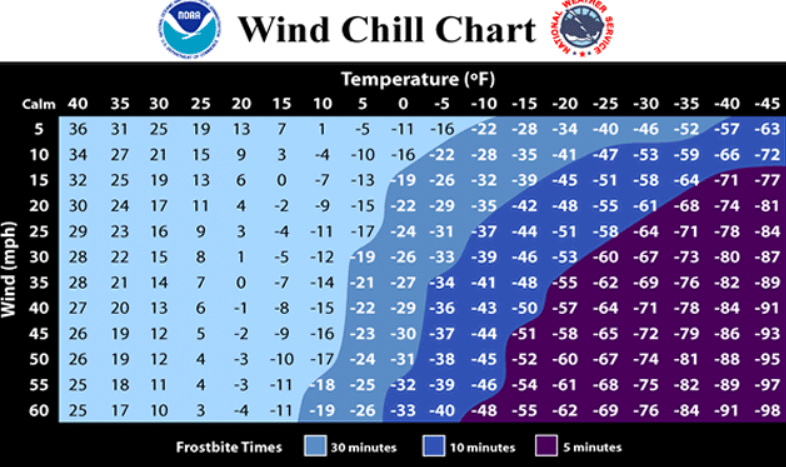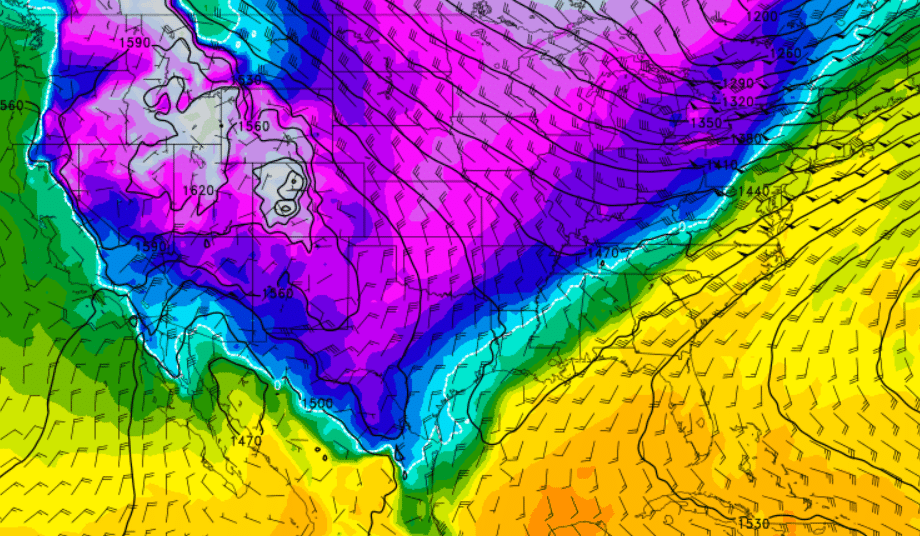Get ready, folks—Mother Nature is turning on the Arctic air come early December. A massive cold front will sweep across much of the United States, bringing the first significant chill of the season for many, especially in the South. This isn’t just any cold front—it’s powerful enough to push Arctic air into Mexico and the Gulf of Mexico, giving many of us an early taste of winter.
Here’s what’s happening, what to expect, and how to stay safe.
????️Breaking Down the Map and the colors
The map highlights conditions at the 850 millibar level, approximately 5,000 feet above the surface—an essential layer for analyzing temperature trends. Purple, blue, pink, and especially white represent very cold temperatures. Expect freezing conditions easily in parts of the Plains, Midwest, and even as far south as Texas.
Green and Yellow indicate air that is not as cold, which is being displaced by the cold front.
The sharp boundary (the front) will bulldoze South quickly the first few days of December, causing dramatic overnight temperature drops. Places like Dallas, Houston, and even northern Mexico could experience sudden, frigid weather.
Why Is This Happening?
Well first of all it will be December by the time the front arrives. The culprit? The jet stream—a fast-moving river of air above us that controls weather systems.
What to Expect
Temperatures: There will be a drop of up to 30–40°F in many areas. Even traditionally warm regions like Texas and Louisiana will need winter gear.
Frost/Freeze Potential: Southern farmers and gardeners, be ready for frost or a hard freeze.
Wind Chills: Gusty winds will make it feel significantly colder than the actual temperature.
Impact on Regional Weather Patterns
Northeast and Midwest
Expect snowfall in northern regions, with potential travel and power line disruptions.
South and Gulf States
Temperatures could plunge to levels typically reserved for deep winter. Even Gulf waters may cool, potentially affecting marine ecosystems.
✔️ Safety Preparations Checklist
- Dress in Layers: Opt for thermal wear, gloves, and scarves.
- Prepare Your Home: Insulate pipes, check heating systems, and stock up on supplies.
- Protect Pets: Bring them indoors and ensure they have adequate warmth.
- On the Road: Carry emergency kits, including blankets, flashlights, and nonperishable food.
Common Cold Weather Questions
How can I stay warm during a power outage?
Use layers, close off unused rooms, and rely on blankets and sleeping bags. To prevent carbon monoxide poisoning, avoid using gas stoves or grills indoors.
What is wind chill, and why does it matter?
Wind chill measures how cold it feels due to wind removing body heat. A temperature of 30°F with 20 mph winds can feel like 17°F, increasing the risk of frostbite.
How to interpret wind chill maps.

When should I cover outdoor plants?
When temperatures drop below 32°F. Use frost cloths or old bedsheets for insulation.
Historical Context: Past Arctic Blasts
The U.S. has experienced several significant Arctic outbreaks in recent years, including:
- February 2021: The Texas Freeze left millions without power and caused billions in damages.
- December 1983: One of the coldest Decembers on record, with widespread agricultural damage.
Quick Fun Fact
Did you know this cold front is powerful enough to cool the warm Gulf waters? With a strong one like this it is possible.
Stay Ahead of the Cold
This is just the beginning of what could be a rollercoaster winter season. Stay tuned for updates, and don’t forget to share this post with friends and family to help them prepare.
One final thought. This is a long way out and models can change. I’ve seen it occur recently in the last two weeks. Stay tuned.

